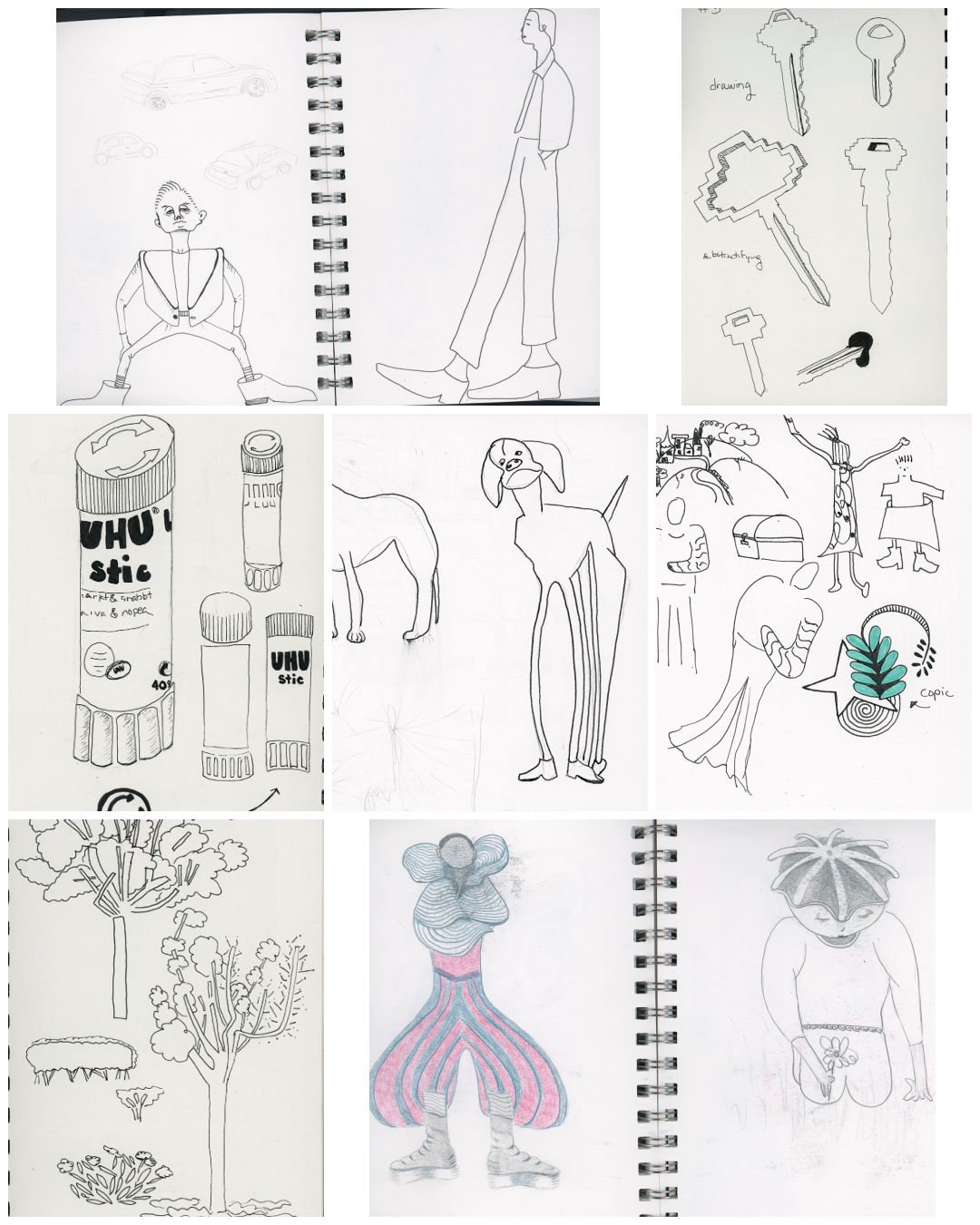A peak into my sketchbook
/I haven’t shared much of my sketchbook lately, partly because I’m focused on making cards and more cards! So today I thought I’d open it up and talk a bit about what I’m learning and working on.
Now you should know there are many kinds of sketchbooks and I’ve tried them all—art journals, visual journals, illustrated journals and diaries, bullet journals, composed sketchbooks and messy practice sketchbooks.
These days, besides working on specific art projects and challenges, I’ve streamlined my art practice into three books: 1) an “everything” journal, which is a daily tool I use to journal, plan, track my practice and keep notes, 2) an art journal that I slowly fill with more composed pages, and 3) a messy anything-goes kind of sketchbook for daily practice and exploration.
When one fills up, I start filling another in chronological order. In any year I find myself filling three or more everything journals, 1-2 art journals and maybe 4-6 sketchbooks.
I leave thee art journal at home for the most part to work on in the studio, but the journal and sketchbook are daily tools I work with at home and while I’m traveling or out and about so I keep them both to a small A5 size. I have a nice elastic case that wraps around both books and holds just the essential pens and pencils so they travel as one unit.
I’ll share more about the other books in later posts, but today I want to focus on my sketchbook.
Keeping a sketchbook is the foundation of my art practice. This is where I consistently practice and experiment. It’s where I build skills and find my way as an artist. I can work in it for 10 minutes or two hours, but as long as I spend some time in my sketchbook my day feels complete.
I only share select sketchbook pages (many are just plain messy and incomplete!)—so there’s no pressure to get everything “right”. There’s a lot of trial and error. It’s a place to let go and really experiment, make mistakes, see what comes. Often ideas start here and end up elsewhere in more fully developed pieces.
Anyway, it’s nice to look back every now and then to see for myself what I’m up to (because honestly, sometimes in the middle of it all, I have no idea!) and to see some value in the mess.
So for the last few months, it seems I’ve been…
Drawing from Life
Sometimes I get my butt outside to draw from life. This is the BEST way to build drawing skills—that is, to translate what we see with our eyes onto the page. No matter how unrealistically I actually like to draw, the best foundation is real-life drawing. I know I can’t do too much urban sketching—and it’s one of my goals for my practice to get outside more and draw.
‘Wonkified’ People
Lately I’ve really been into “wonky” figure drawing because while drawing realistically from life is great practice, I’m more interested in abstractifying my subjects. I’ve shared other wonky sketchbook people on the blog, and here are some more:
This is a good example of the value of a sketchbook. These sample pages are pretty rough as I experiment and learn—but I feel like I’m gaining clarity on how I like to draw figures in my more finished work outside of my sketchbook (cards on instagram lately, for example).
Abstract Experiments
And then sometimes I go abstract all the way in my sketchbook practice.. It’s very relaxing when I do this kind of work, but I’m also learning about shapes and what pleases me—which is key to creating. So there’s a lot of experimenting and learning going on in these sketches below, too. I’ve included one of my pages with collage and ink, bottom left corner. Sometimes I like to do quick abstract collages and invariably my subconscious has something to tell me.
Abstractifying
Finally, abstract seems to be a big theme all around. I found myself experimenting a lot with ways to abstractify objects and people. These are mainly just ideas that I hope to flesh out at another time
It’s funny, in the moment, day to day, I often didn’t know what to draw or why one subject interested me over another. I often felt lost, my head started spinning, and there were days where I gave in and didn’t even try.
But my art practice kept me moving forward. Most days, I started to draw anyway even without direction (and most of the time just starting eased all that resistance). And over time, I see now that I was following ideas about how I like to draw—which puts me on firmer ground now.
This is all to say that having a practice—a commitment—to draw something every day, if even for 10 minutes, and a safe place to do it (a messy sketchbook no one else needs to see), kept me going.
Thanks for letting me share.





